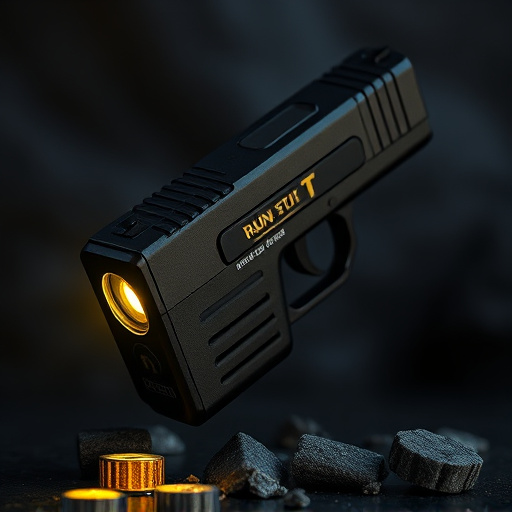Understanding electrical current is key to comprehending compact stun devices like the Runt Stun Gun. Direct Current (DC), preferred due to its consistent unidirectional flow, enables precise control over output for effective and safe activation during high-stress situations. While Alternating Current (AC) is common in household outlets, size and efficiency constraints limit its use in small stun guns; however, high-power AC models exist with advanced circuitry to handle higher voltage outputs.
“Unraveling the science behind electrical current flow in runt stun guns is essential for understanding their functionality and safety. This article guides you through the fundamentals of direct current (DC) and alternating current (AC), shedding light on how these concepts apply to stun devices. We delve into the intricate electrical components of a runt stun gun, explaining the current flow process during activation and its immediate effects on the body. Additionally, safety measures are discussed to ensure informed and responsible use.”
- Understanding Basic Electrical Current: Direct vs Alternating
- – Definition and explanation of direct current (DC) and alternating current (AC)
Understanding Basic Electrical Current: Direct vs Alternating
Understanding the basics of electrical current is key in comprehending how stun devices function, particularly when discussing a compact stun gun designed for personal protection. Direct current (DC) and alternating current (AC) are the two primary types that power most electrical devices, including stun guns.
In a runt stun gun, direct current is typically employed as its power source. DC flows in one direction continuously, providing a steady stream of electricity. This direct flow allows for precise control over the device’s output, ensuring the stun effect is delivered effectively and safely when activated by the user. In contrast, alternating current changes direction regularly, which can be beneficial for certain applications but may not offer the consistent power delivery needed in a stun device to ensure its reliability in high-stress situations.
– Definition and explanation of direct current (DC) and alternating current (AC)
Direct Current (DC) and Alternating Current (AC) are two fundamental types of electrical current that power various devices, including stun guns. DC is a constant flow of electric charge in one direction, typically provided by batteries. It maintains a steady voltage level, making it ideal for small, portable devices like runt stun guns, where consistent performance is crucial for reliability and user safety. On the other hand, AC current changes direction periodically, usually at a specific frequency determined by the power grid (like 50Hz or 60Hz). This type of current is commonly used in household outlets and larger electrical systems. While not as common in compact stun devices due to size constraints and efficiency considerations, AC can be found in some high-power stun guns that require more complex circuitry and higher voltage outputs.
Stun devices, including compact Runt stun guns, operate on a fundamental principle of electrical current flow. By understanding the dynamics of direct current (DC) and its contrast with alternating current (AC), we gain insight into these powerful tools’ functionality. DC, known for its constant direction, ensures a continuous electric shock, while AC’s periodic reversal allows for more controlled energy delivery. This knowledge is crucial in optimizing stun device performance and safety, demonstrating the intricate balance between electrical principles and practical application.
